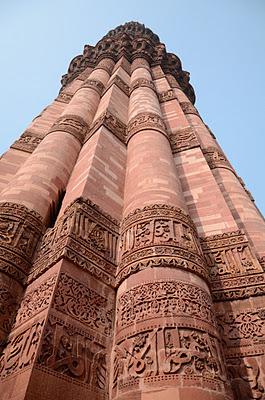
Nestled in a quiet corner of south Delhi, towering over the surrounding landscape, is New Delhi's most recognizable monument, the Qutub Minar. Towering at a height of 72.5 meters, this minaret was built by Qutab-ud-din-Albak sometime in the 1190s. Now, a World Heritage Site, Qutub Minar remains one of Delhi's most famous and visited monuments.


With the Base Diameter of 14.3 meters and the Top Diameter of 2.7 meters a total of 379 steps are required to climb to the top. Unfortunately, after an incident in the 1980s where power failure resulted in a stampede inside, members of the public are no longer allowed to climb the Qutub Minar.

Over the years the Qutub Minar has seen its fair share of problems with the top being damaged by lightening at one time, and structural damage due to earthquakes over time. Thankfully, it has been repaired as and when the damage occurred and as a result it remains a marvel for generations to see.


The entire Qutub Minar complex is a well maintained property with lush gardens. The guides do not harass and an official audio tour is available at a nominal price if you would rather do your own sightseeing.

The complex also houses the Iron Pillar which has had an interesting theory attached to it. It is said that if a person were to stand with his back to the pillar and then manage to wrap his/her hands around it, then their wish will come true. Unfortunately, due to the effect the "oily" hands were having on the pillar, it has now been cornered off.


The other magnificent fact about the pillar is that even though it is 98% Iron, and has been in the open, it still remains rust free after close to 1600 years. The Delhi weather along with some sort of coating is considered the reason for this pillar's present condition.

So, when in India, take out some time and head over to the Qutub Minar for a couple of hours and immerse yourself in the history of Delhi.

